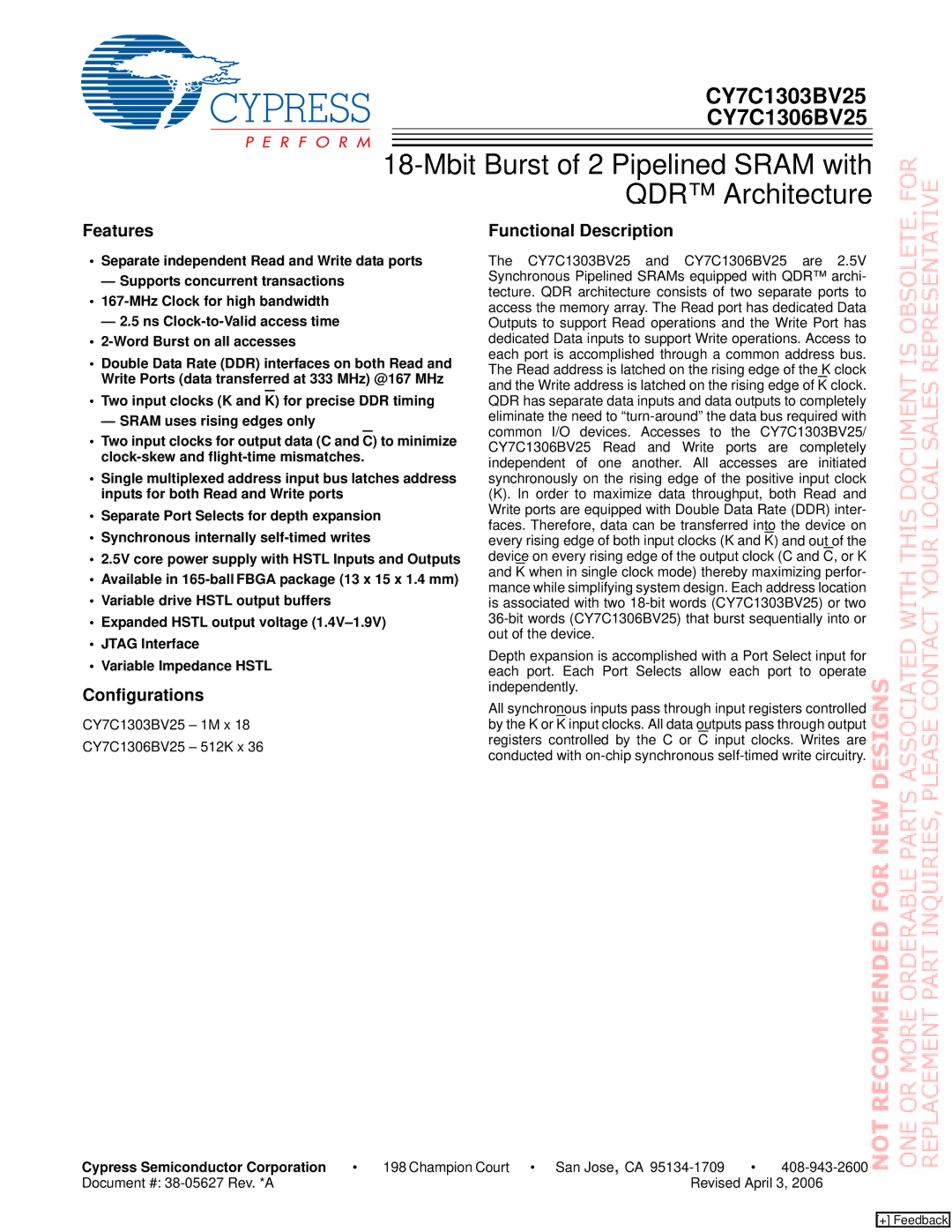
CY7C1303BV25
CY7C1306BV25
18-Mbit Burst of 2 Pipelined SRAM with QDR™ Architecture
Features
•Separate independent Read and Write data ports
—Supports concurrent transactions
•
—2.5 ns
•
•Double Data Rate (DDR) interfaces on both Read and Write Ports (data transferred at 333 MHz) @167 MHz
•Two input clocks (K and K) for precise DDR timing
—SRAM uses rising edges only
•Two input clocks for output data (C and C) to minimize
•Single multiplexed address input bus latches address inputs for both Read and Write ports
•Separate Port Selects for depth expansion
•Synchronous internally
•2.5V core power supply with HSTL Inputs and Outputs
•Available in
•Variable drive HSTL output buffers
•Expanded HSTL output voltage
•JTAG Interface
•Variable Impedance HSTL
Configurations
CY7C1303BV25 – 1M x 18
CY7C1306BV25 – 512K x 36
Functional Description
The CY7C1303BV25 and CY7C1306BV25 are 2.5V Synchronous Pipelined SRAMs equipped with QDR™ archi- tecture. QDR architecture consists of two separate ports to access the memory array. The Read port has dedicated Data Outputs to support Read operations and the Write Port has dedicated Data inputs to support Write operations. Access to each port is accomplished through a common address bus. The Read address is latched on the rising edge of the K clock and the Write address is latched on the rising edge of K clock. QDR has separate data inputs and data outputs to completely eliminate the need to
(K). In order to maximize data throughput, both Read and Write ports are equipped with Double Data Rate (DDR) inter- faces. Therefore, data can be transferred into the device on every rising edge of both input clocks (K and K) and out of the device on every rising edge of the output clock (C and C, or K and K when in single clock mode) thereby maximizing perfor- mance while simplifying system design. Each address location is associated with two
Depth expansion is accomplished with a Port Select input for each port. Each Port Selects allow each port to operate independently.
All synchronous inputs pass through input registers controlled by the K or K input clocks. All data outputs pass through output registers controlled by the C or C input clocks. Writes are conducted with
Cypress Semiconductor Corporation | • | 198 Champion Court • San Jose, CA | • | |
Document #: |
| Revised April 3, 2006 | ||
[+] Feedback
